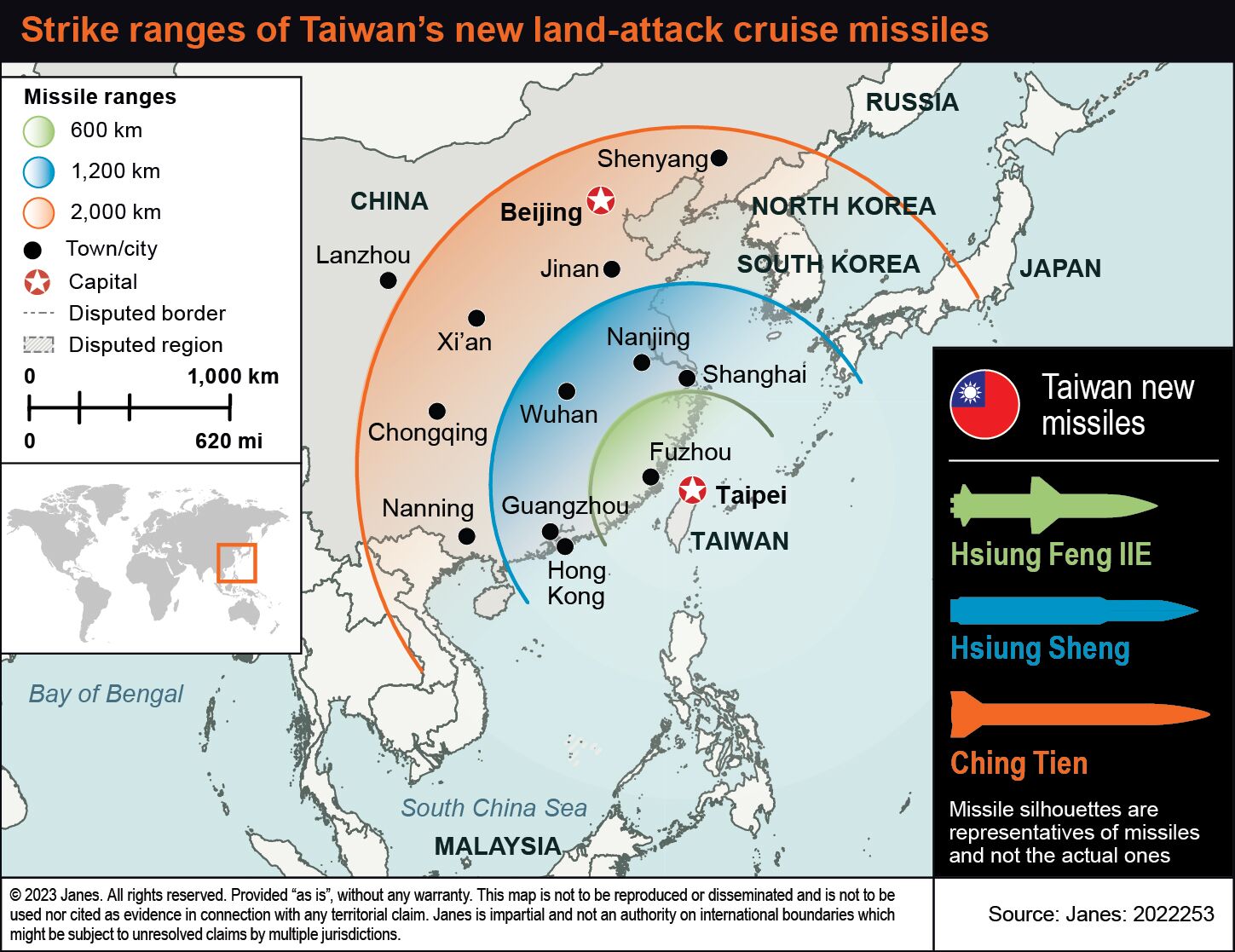
Taiwan has developed Hsiung Feng IIE, Hsiung Sheng, and Ching Tien LACMs capable of striking key Chinese cities such as Beijing as well as Wuhan, Shanghai, and Qingdao, as part of its plan to improve air and sea combat capabilities. (Janes)
Taiwan is planning to deploy a long-range variant of Hsiung Feng II land-attack cruise missile (LACM) called Hsiung Sheng in 2024, a Republic of China Army (RoCA) officer told Janes on 6 April.
The missile – which went into production in 2022 – can strike at a maximum range of 1,200 km at a speed of Mach 0.85, making it capable of hitting the Chinese People's Liberation Army's (PLA's) Eastern Theater Command bases in Xiamen, Quanzhou, and Fuzhou; and Southern Theater Command bases in Guangzhou, Nanjing, Shanghai, and Wuhan.
The missile procurement is part of a TWD484 billion (USD15.05 billion) ‘special budget' allocated by Taiwan's Ministry of National Defense (MND) to acquire ‘advanced' military weapons between 2022 and 2026.
In 2022 the MND set aside nearly TWD17 billion from this ‘special budget' to procure 131 Hsiung Sheng missiles by 2025.
According to unconfirmed local media reports, the MND plans to deploy nearly 100 Hsiung Sheng missiles in 2024.
The missile is developed by the island's state-owned National Chung-Shan Institute of Science and Technology (NCSIST).
Hsiung Sheng features two types of warheads – high-explosive (HE) and fragmentation – which can be aimed at command posts, bunkers, and airbase runways, the MND said in a parliamentary report in 2022.
The missile is likely equipped with an imaging infrared (IIR) seeker and a GPS‐aided inertial navigation system (INS).
Looking to read the full article?
Gain unlimited access to Janes news and more...







